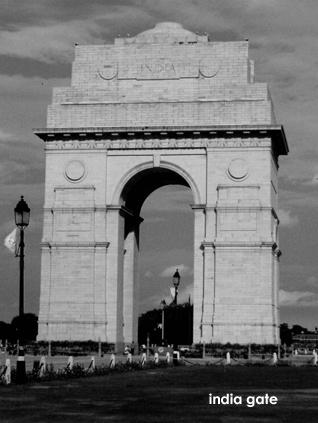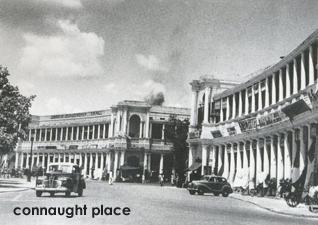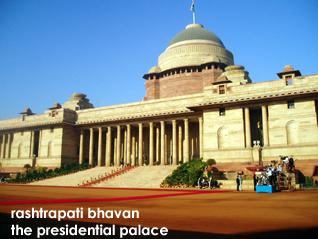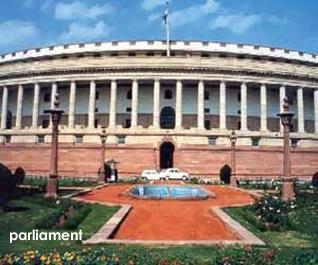Architecture
The Sardars Who Built New Delhi, Modern India's Capital
by KHUSHWANT SINGH
It would not be an exaggeration to say that most of New Delhi, the Capital of India, was built by a coterie of Sardar contractors of whom five did the lion's share of building.
In Sikh circles, they were known as 'punj pyarey' - the 'five beloved', borrowing the term from the first five Khalsa of the Tenth Sikh Master, Guru Gobind Singh.
The top five builders were Sobha Singh, Basakha Singh, Ranjit Singh, Mohan Singh and Dharam Singh Sethi.
The British gave them due credit by inscribing their names on stone slabs. You can see them in the alcoves of South and North Blocks. The South Block has five names starting with my father, Sobha Singh, the North Block has a list of architects and engineers including my father-in-law, Teja Singh Malik, who was the first Indian head of the Central Public Works Department.
The British did more.
Before quitting India, they conferred knighthoods on Teja Singh Malik and Sobha Singh.
You can't be blamed for not being aware of this because free India's rulers did nothing to perpetuate their memory. Not a single road, bylane or round-about was named after any of them. Whether the new rulers were from the Congress party or the BJP, they were more concerned with giving credit to their party members than recording the truth. At times it appeared like anti-Sikh communal prejudice. Perish the thought.
Mani Shankar Aiyar had the Parliament sanction to change Connaught Circus into Indira and Rajiv Gandhi names. The metro stations are named according to his wishes, but the average Dilliwala prefers calling Connaught Circus as Connaught Circus. He also named a prominent road after the eminent Tamilian poet Subramaniam Bharati Marg. Why not? We have Amrita Shergill Marg.
Neither had anything to do with New Delhi.
Why no road after Amrita Pritam who lived and died here?
It's time Sheila Dikshit, Delhi's chief minister, resisted pressure by petty politicians and gave the real builders of New Delhi the credit due to them.
[Courtesy: Hindustan Times. Edited for sikhchic.com]
July 12, 2011
Conversation about this article
1: Jagmir Kaur (New Delhi, India), July 12, 2011, 9:53 AM.
It's true. Sikhs brought glory and regality to this city. And then came the riff-raff from the Hindi-speaking boondocks and have ruined the city. Come and see for yourselves and be the judge. Even better, visit the official residence of any Member of Parliament from UP, Haryana, Bihar. MP, Orissa, Maharashtra, Gujrat, etc., in New Delhi! You'll know what I mean when I say that this country has gone to the dogs!
2: Harinder (Uttar Pardesh, India), July 12, 2011, 11:16 AM.
The only way to remember your past is to be alive and work in the present. Delhi Sikhs are pathetic on several counts, notwithstanding the butchery they allow themselves to get repeatedly into, as in 1947 and 1984. They just want to live off there past glory. Life cannot be lived on the wealth of ancestors, or their bravery, etc. Each generation has to work, build, fight to be alive in the present world or it should be ready to be consigned to history. I pity today's Sikhs in Delhi and their complacent life-style.
3: Raj (Canada), July 12, 2011, 12:45 PM.
Majority of officials or politicians in India are "cattle class" and sadly, they promote their own whole heartedly. Sikhs had better chances in every field under the British, even better than under Ranjit Singh's rule. This is because the British understood the strength and qualities of the Sikhs better than even the Sikhs themselves. Again, Harinder is right: we can't live on past glory. We need to find our place in an ever-changing world. We haven't lost our "can do" spirit, just have to rejuvenate it. Look at Canada and Britain where, today, Sikhs are the second richest ethnic group after the Jews.
4: I. Singh (Chelmsford, MA, U.S.A.), July 13, 2011, 12:19 PM.
As a side note - Tees Hazari area which houses the Delhi High Court is named after the 30,000 Sikh troops under the leadership of Sardar Baghel Singh (source - oral history in my Sikh circles). Also, legend has it that Mori Gate, which is the area of the ISBT Delhi, was actually the hole that was created after the Sikhs used logs to break into the wall of the fort (source - sikhiwiki.org).
5: R. Singh (Canada), July 17, 2011, 10:13 AM.
The sense of entitlement of the majority that rides on the backs of its unrecognized minorities is a blindness that will sink Indians. They cannot go beyond lauding politicians, pretending everything came their way because they chose to be sufficiently petulant and accusatory towards the British, while everything just appeared miraculously via a magic wand. As they say, easy come, easy go. The world will benefit, while India loses out on the spirit of its sons and daughters, for pretenders and posers who cannot recognizee a spade for a spade, now clog the corridors and by-lanes.
6: Deepak (England), July 17, 2011, 3:34 PM.
Amazing article. Thanks :)
7: Gurdayal Singh (New Delhi, India), September 03, 2011, 1:25 AM.
No other community with such a small population has exerted so much influence through its achievements in each and every field. Our misfortune is that Maharaja Ranjit Singh could not find a good successor. All that India enjoys today is because of the sacrifices by our Gurus and other Sikhs.






